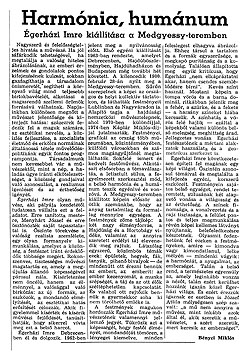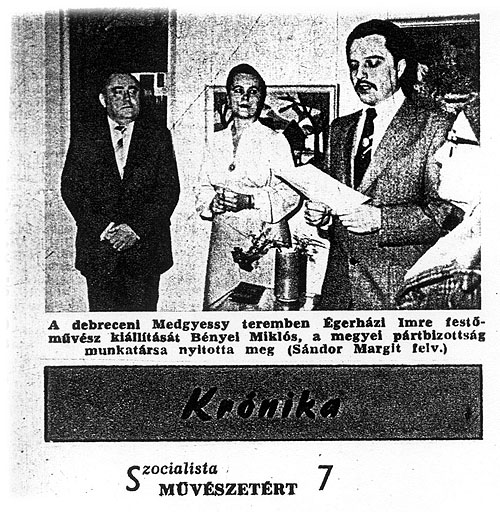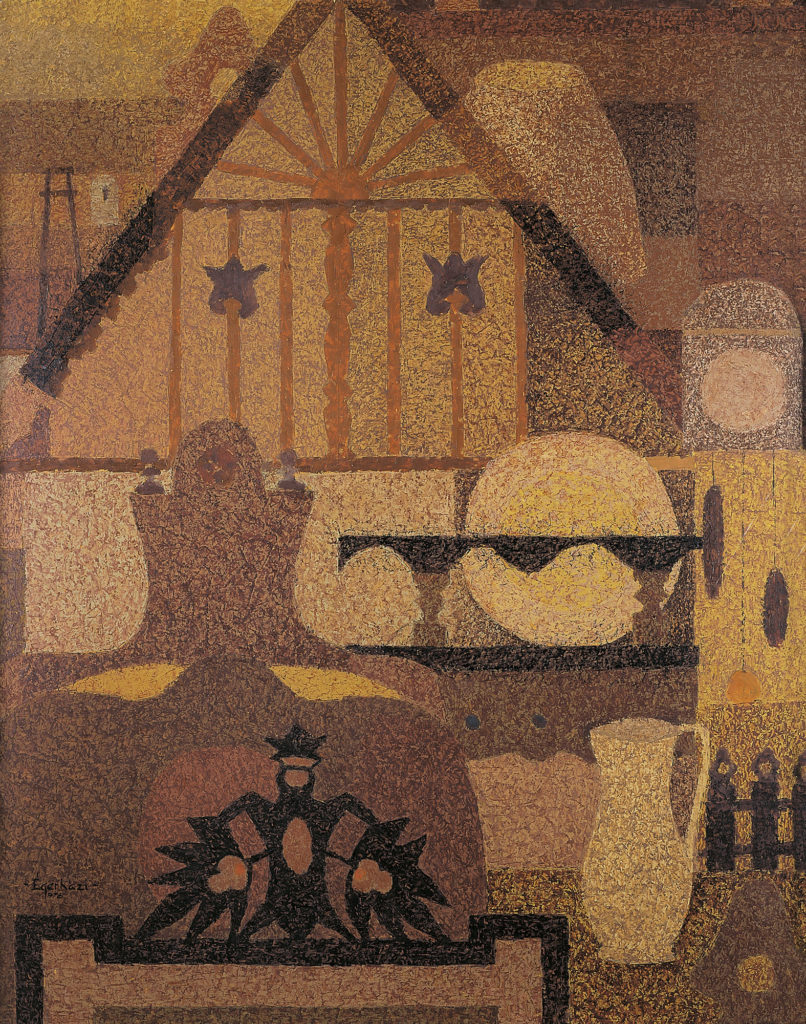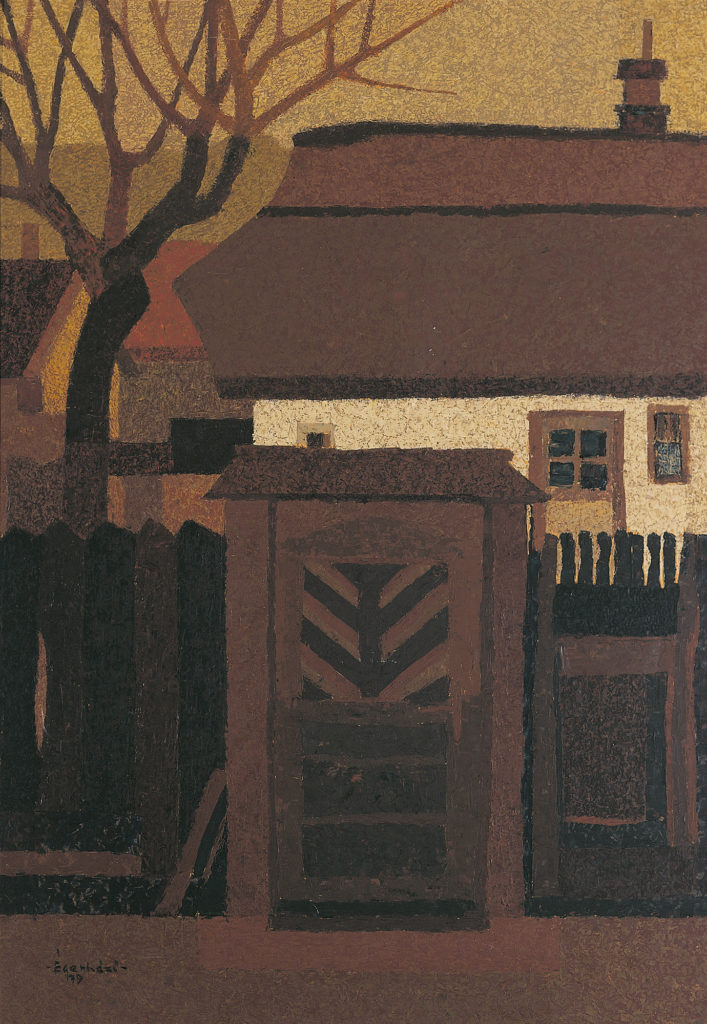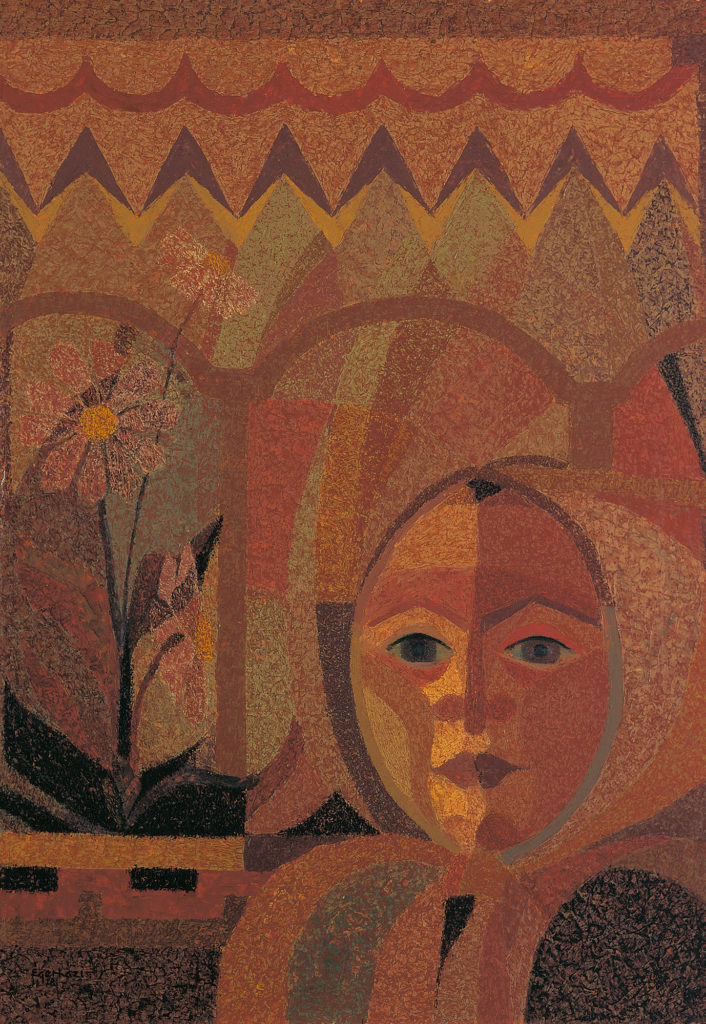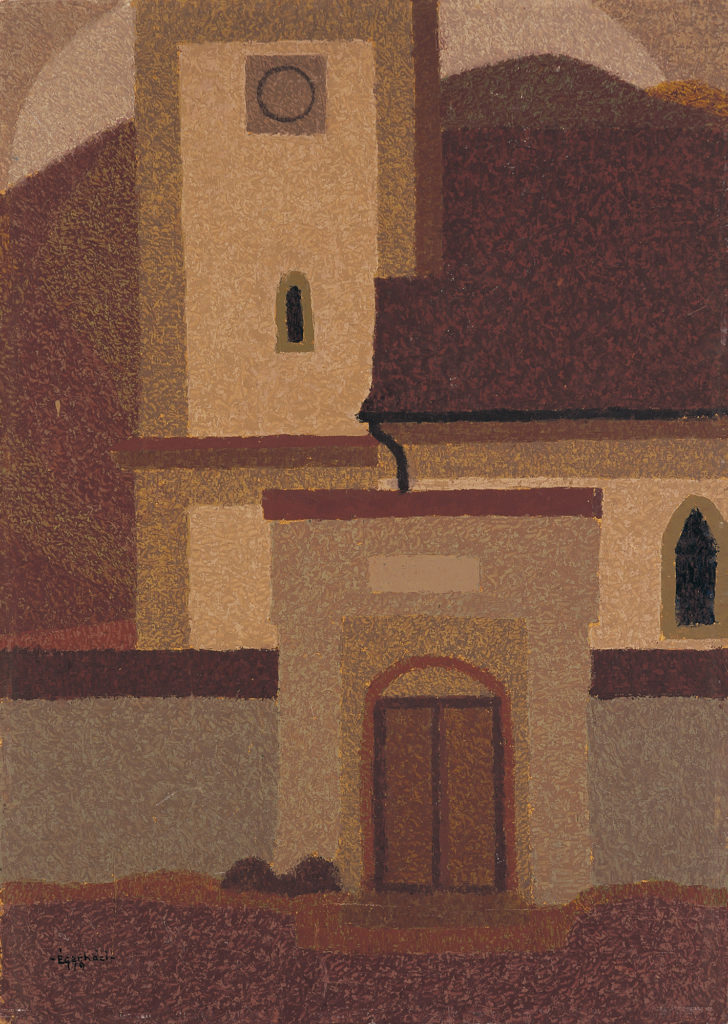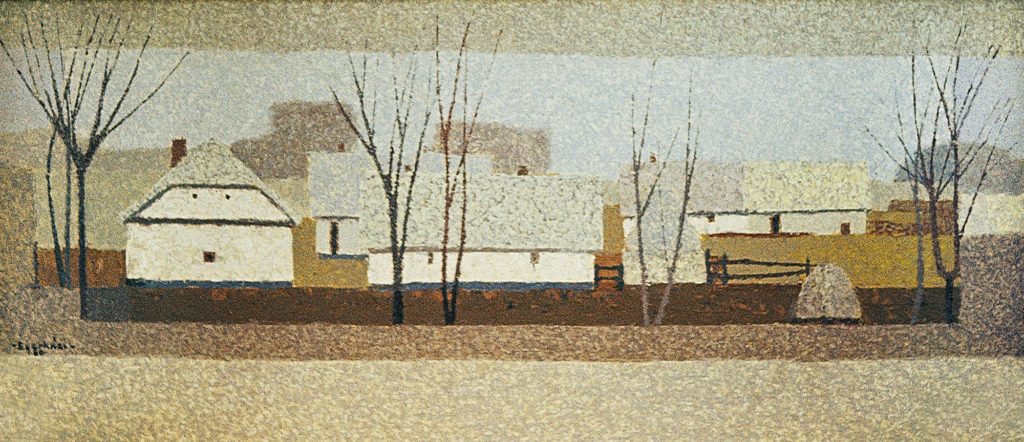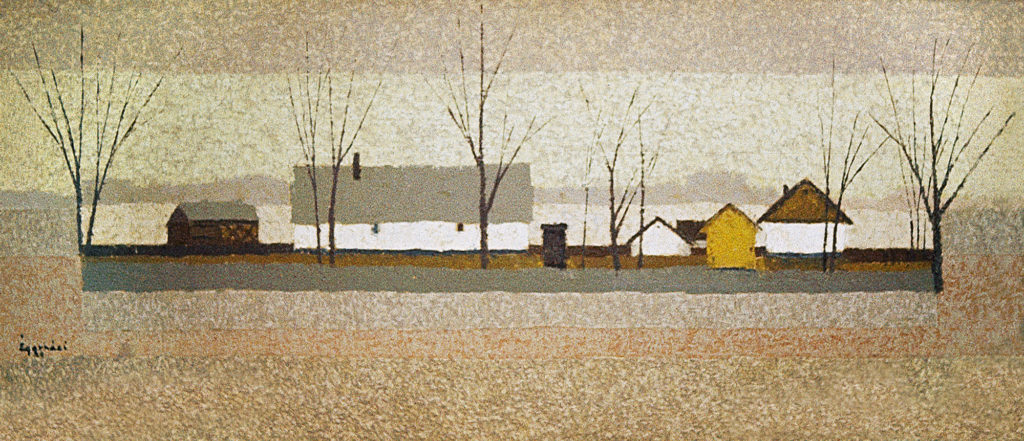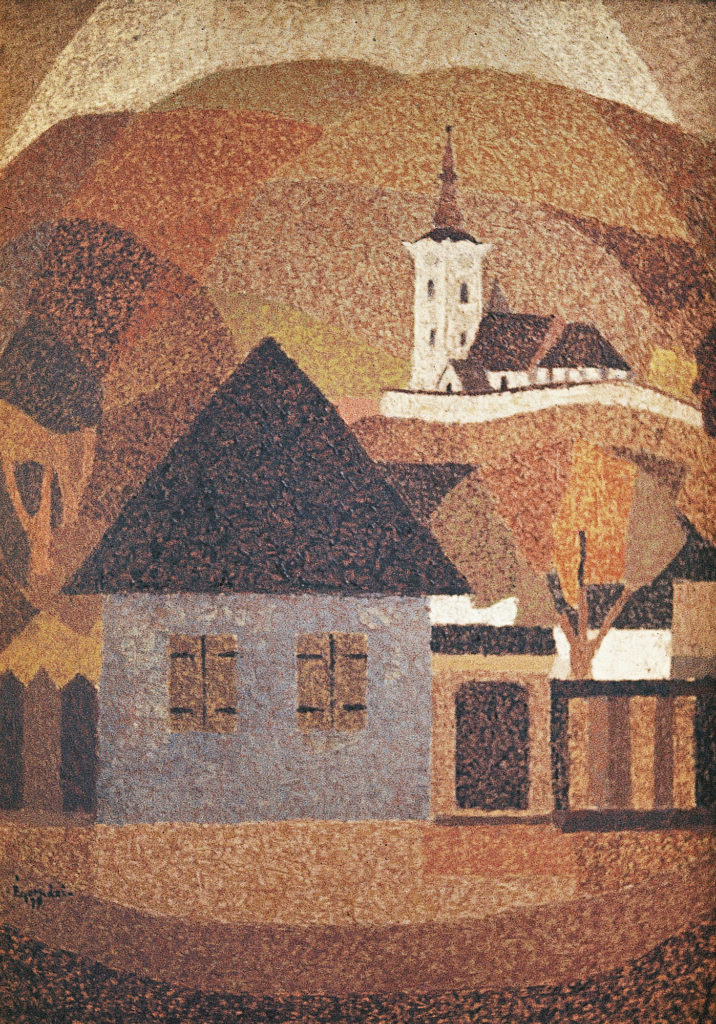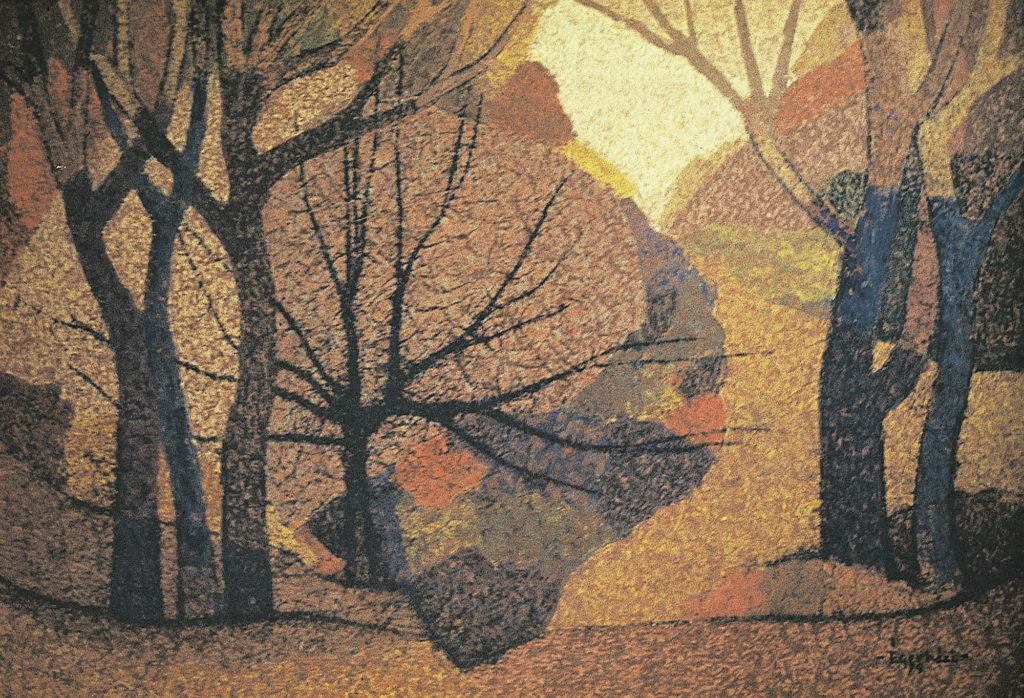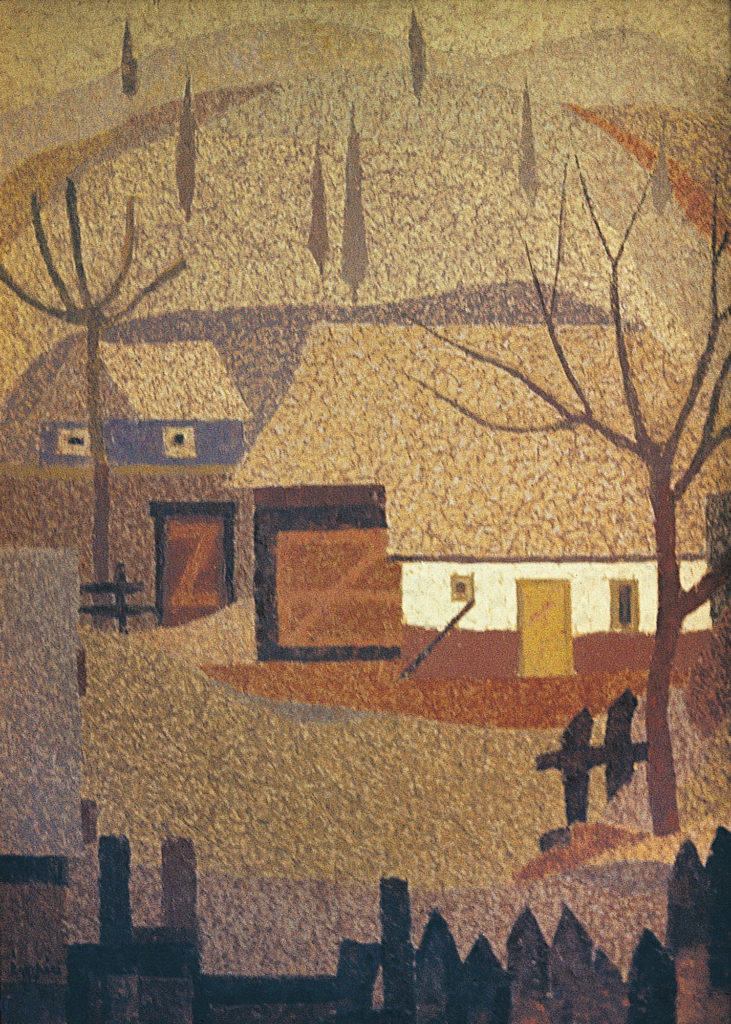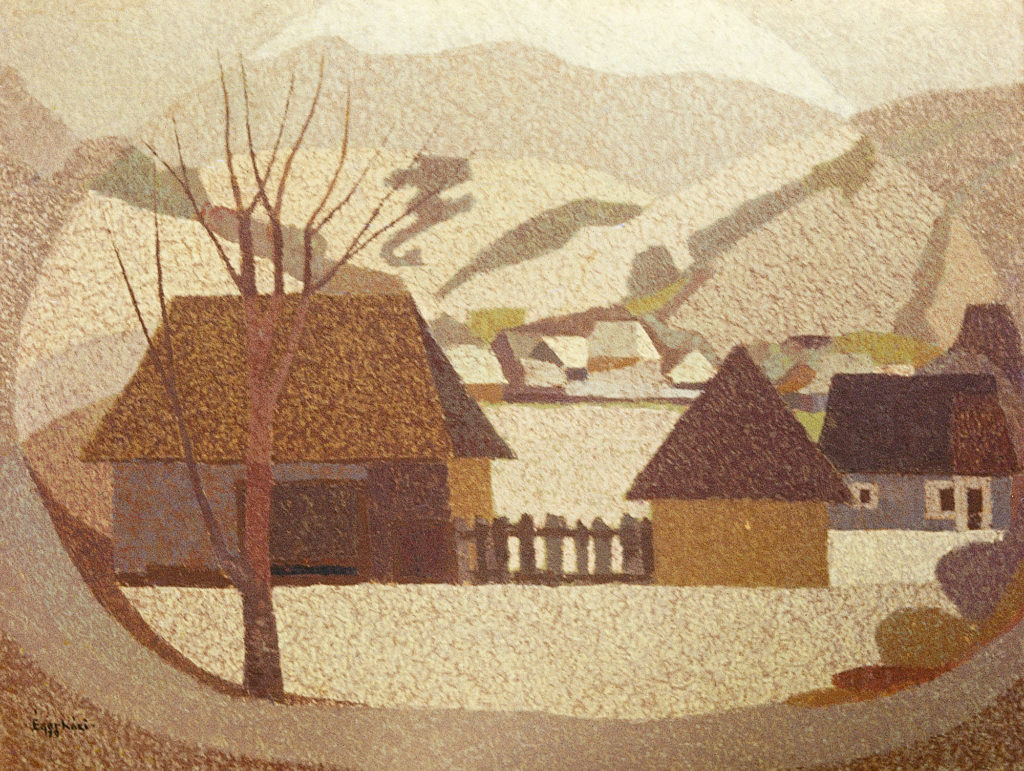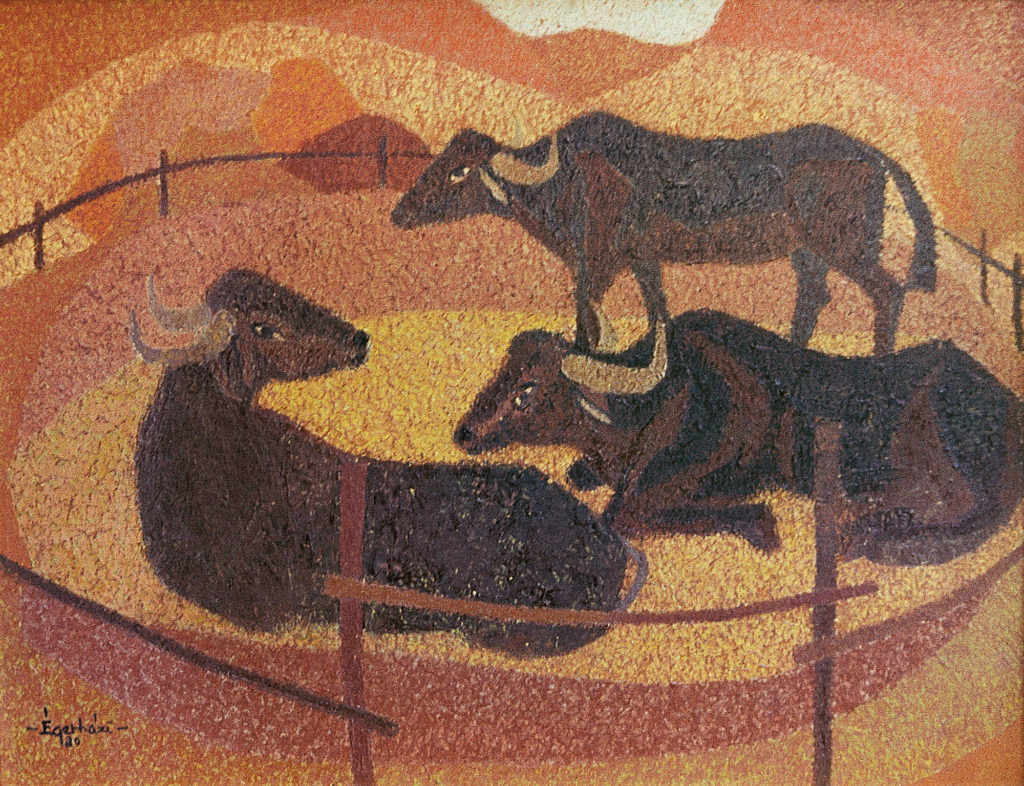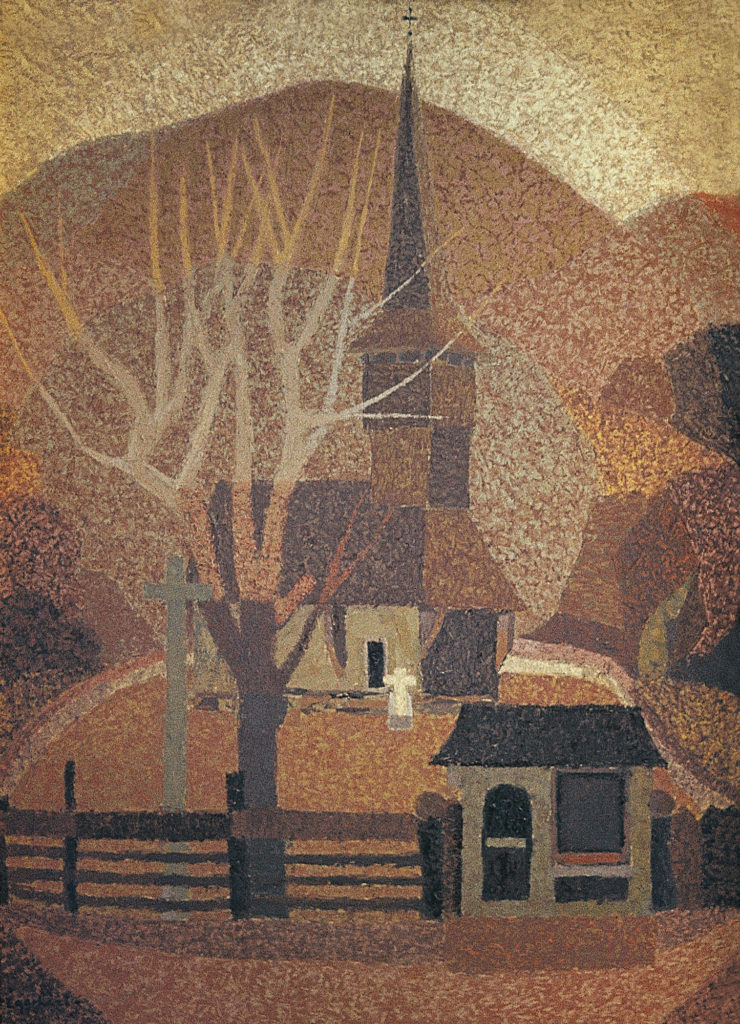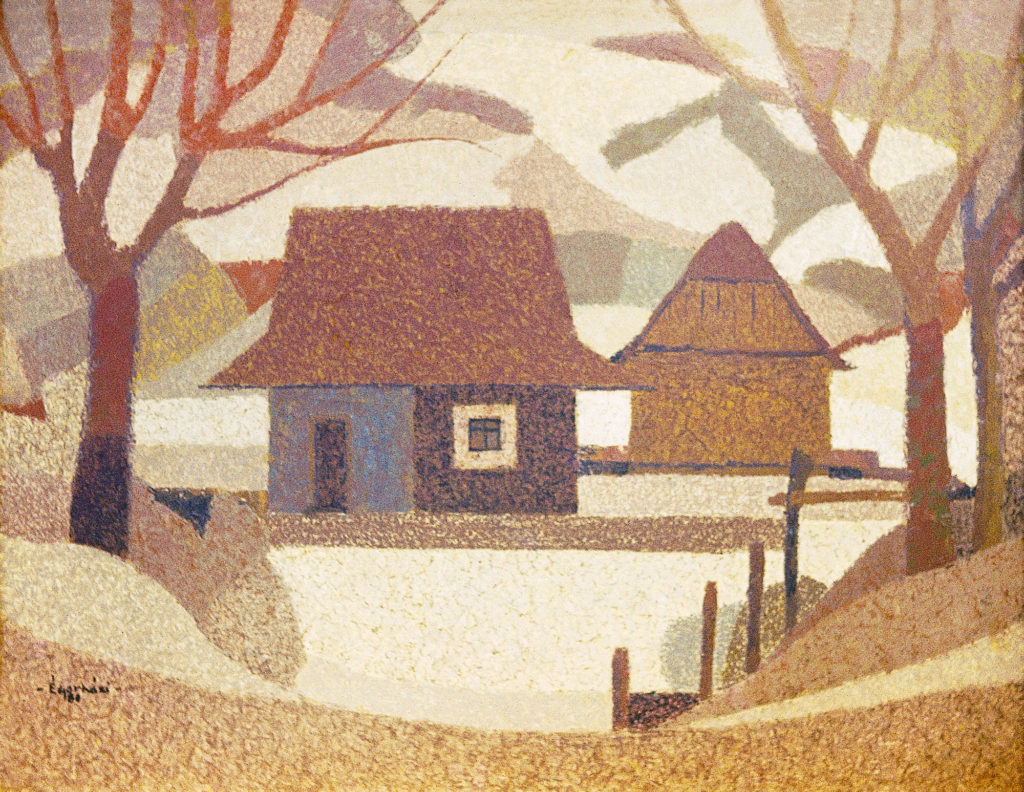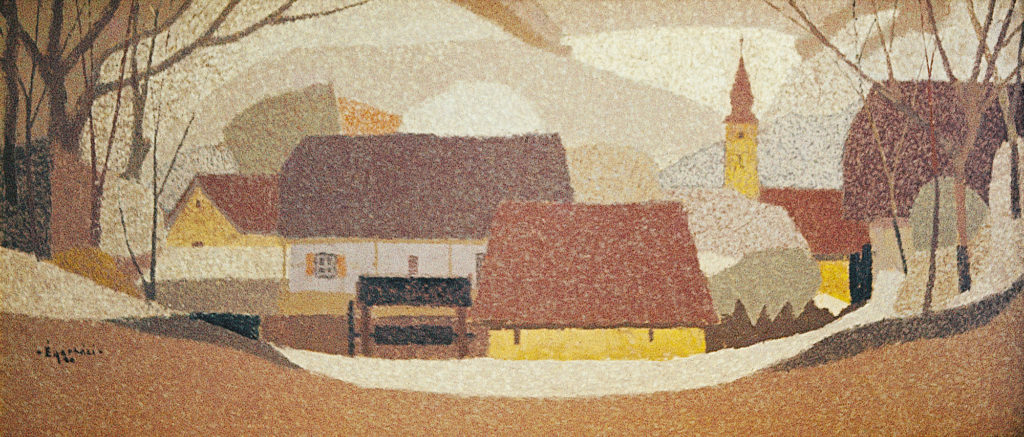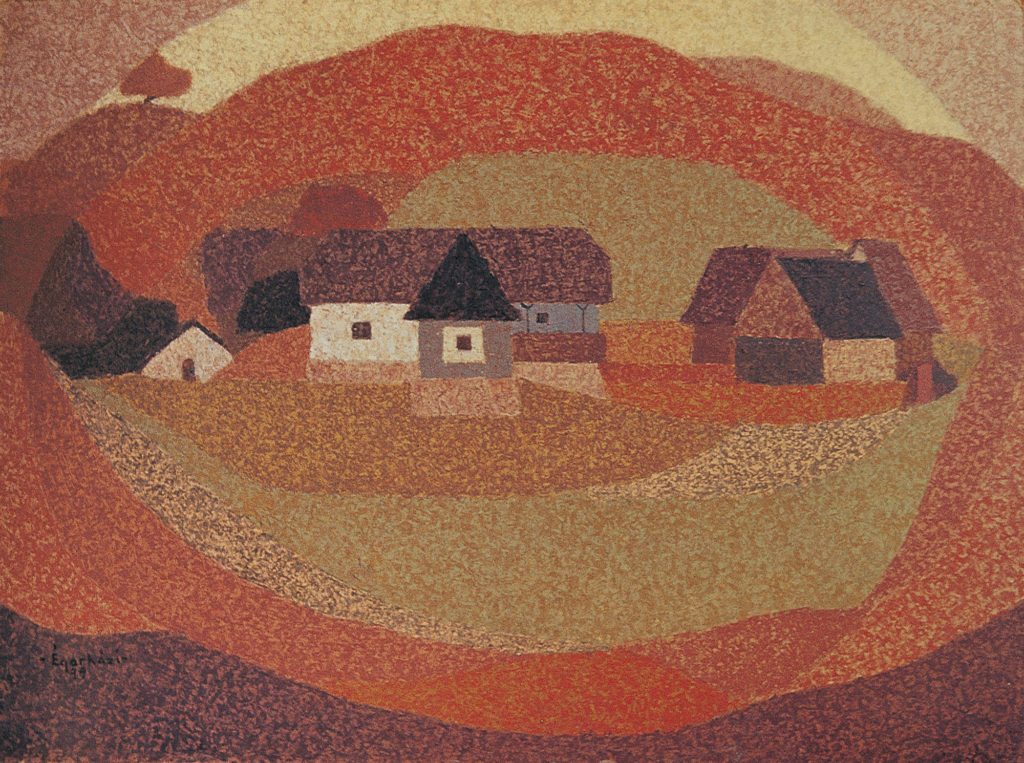Harmony and humaneness
Imre Égerházi exhibition in Medgyessy Hall
(Article from Hajdú-Bihari Napló by Miklós Bényei, published on March 8, 1980)
An artist’s profession is one of greatness and responsibility. If the artist uses its talent well, if they find the key to an authentic representation of reality, the exact expression of human emotions and thoughts, they can enrich the self-knowledge of society, help taking a fuller possession of the world around, and their creations can become a source of high spiritual joy. Nowadays, the importance and extensive impact of art has increased in particular: hundreds of thousands discover for themselves, aesthetic education, the development of public taste, the generalization of the norms of the socialist way of life and morality is one of the important program points of our cultural policy. Our society expects no less from artists than their commitment to the people, to the cause of progress, their identification with the concerns of the community, the affirmation of realism, and the need for understanding.
Imre Égerházi is an artist who consciously took on this task from the beginning of his career. This was taught by his master, József Menyhárt, and he was encouraged by his own experiences. His sincere pursuit is a realistic view of reality, the elaboration of a formal language that is understood by the majority of the audience, those interested in painting. It is a sympathetic, fair artistic attitude that is coupled with his constant ability to renew.
His experimentation is not an end in itself, but a struggle with experience, with reality: the new forms, the means, are aimed at deepening what is to be said, and at strengthening the aesthetic effect. Those who have monitored and accompanied his artistic development can attest to his success in this inner struggle.
Imre Égerházi lives and works in Debrecen. He appeared in public in 1962. He organized his first solo exhibition in 1963, followed by another 7 in Debrecen, Hajdúböszörmény, Hajdúhadház and Budapest. The 9th opened on February 28, 1980 in the Medgyessy Hall. His paintings are frequently featured in national and local collective exhibitions, and he has also been able to see his paintings in Lublin and Oradea. He is a founding member of the Hajdúság International Artists’ Colony, where he was awarded a special prize in 1970 and the Miklós Káplár Prize in 1974. His paintings and graphics can be found in several museums, public institutions, foreign cities and many private collectors in the country. He is a well-known and widely popular painter. His creations are made individual and attractive primarily by his choice of theme, refined style, disciplined editing mode, inner harmony and humanity. In his paintings exhibited in the Medgyessy Hall, the first thing that comes to mind is how uniform it is in terms of content and form. Most of the paintings are landscapes: the two great sources of experience, the countryside of Hajdúság and Hortobágy, as well as the much-loved Transylvanian landscape come to life. These seemingly simple, indifferent themes are: buildings, mountains, trees, homesteads, resting buffaloes – but everywhere you can feel the human, the humaneness: the handprint of man, the beauty of work, the indestructible connection between the landscape and the people who live there. And somewhere in them lurks the memory of childhood that can never be erased.
The paintings carry all the characteristic features of Imre Égerházi’s art. They reflect his ability to depict his picturesque experience, what he has to say concisely, emphasizing the essence, leaving out everything superfluous. This is accompanied by simplicity of content and forms, receptive puritanism and seriousness. One of his critics aptly stated that Égerházi did not want to dazzle, but to inspire quiet contemplation.”
He uses few colors. His current paintings are dominated by dull red and brown, less frequently white, gray, and black – we look for loud colors in vain. The color effect leans towards red – thus some special inner warmth and intimacy flows from the images. A characteristic feature of Égerházi’s painting is the use of geometric shapes and geometric structure. Imre Égerházi consistently built a pictorial world for himself. He sincerely identifies with his themes and has found individual, modern means of expression. He created a special inner unity and order in his paintings, the two basic features of his style are clarity and intelligibility. Through the subtlety of the colors, the clarity of the lines and the drawing, and the precise and complete workmanship of the surface, his images provide a pleasant sight and make you wonder.
We can discover something in these paintings that, explicitly or implicitly, in the depths of his soul, everyone desires: harmony, tranquility, humanity. Maybe it’s the internal order, the natural balance that attracts the viewer the most, maybe that’s why the world of Égerházi can come really close to us. And that is why we feel the deeply beautiful words of Attila József: “an artwork lives not so much because of the artist but by those who love art and love it because they seek humanity”.
Exhibition of painter Imre Égerházi
(Article from Hajdú-Bihari Napló, published on February 27, 1980)
The solo exhibition of the painter Imre Égerházi will open in the Medgyessy Hall in Debrecen on Thursday 28 February at 5 pm. Opening speech by dr. Miklós Bényei, an employee of the County Committee of the Hungarian Socialist People’s Party.
Imre Égerházi held exhibitions since 1962, but is now performing for the first time in the Gallery. So far, he has twice won the Miklós Káplár Memorial Medal at the Hajdúböszörmény International Artists’ Colony.
Two fine art exhibition opened in Debrecen
(Article from Hajdú-Bihari Napló, published on March 1, 1980)
On Thursday, February 28, in the afternoon, two fine art exhibitions opened in Debrecen. At the TIT Csokonai Club, at 4:30 pm, critic Zoltán Simon opened the exhibition of the painter Lajos Bíró, which features only portraits. At 5 pm, dr. Miklós Bényei, an employee of the County Party Committee, delivered the opening speech at the exhibition of the painter Imre Égerházi in the Medgyessy Hall.
Both exhibitions, although the dates of their opening were too close to each other, already attracted a large audience at the opening.
Exhibitions in the Medgyessy Hall
Events for Workers’ Education
(Article from Hajdú-Bihari Napló, published on February 16, 1980)
In 1980, according to the plans, the audience can visit 6 exhibitions in the Medgyessy Hall of the Gallery Company in Debrecen, where they can get acquainted with the works of artists living and working in Debrecen and other parts of the country.
The first exhibitor is the painter Imre Égerházi, whose exhibition will open in Q1 (February 28), and the painter József Fodor from Hódmezővásárhely will present an independent exhibition material at the second event in May. This will be followed by the “Flower Still Painting Demonstration” from August 14 in connection with the “For a flower-covered Debrecen” movement. A change from last year’s program that this time a collection from the artworks of the ceramic artist Judit Karsay are displayed for those interested, in September.
The joint exhibition of the artists of the Hajdúböszörmény Hajdúság International Artists’ Colony entitled “Hortobágy-Debrecen” promises to be an interesting event of October. In November, the exhibition of painter György Korga will take place.
In addition to the permanent activities for workers’ education, guided tours of the Society for the Dissemination of Scientific Knowledge are organized 4 times, where socialist brigades, workers’ collectives and all interested parties can get acquainted with the work of an artist, but also with issues related to art.
This program also fits in with the commitments of the attendees of the “Reality of our Era Contest.” These guided tours take place during the exhibitions held during the year. The audience will be informed about their exact time and the identity of the performers through the Debrecen Hívogató and the Napló.


